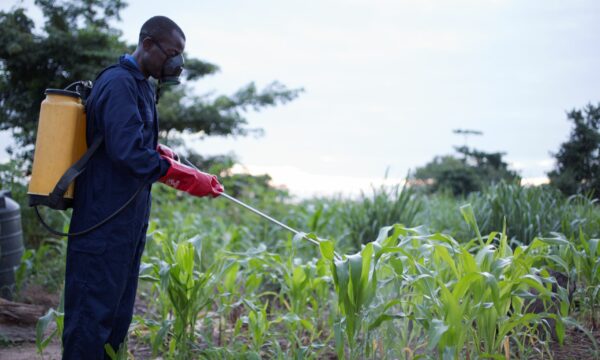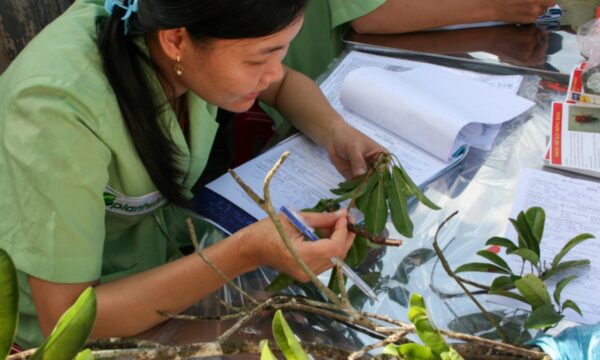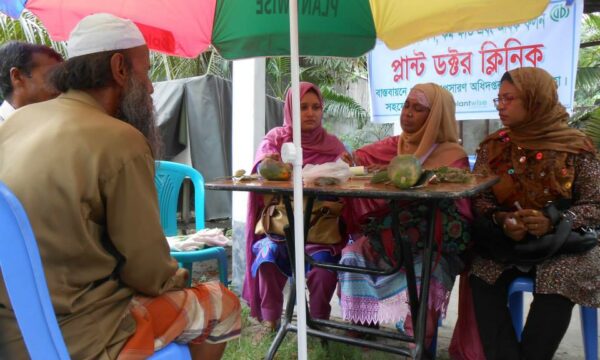This article was originally published on the CABI BioProtection Portal blog. Visit the original blog post here. Anthracnose is a catch-all, general term. It describes the damage caused to plants by a group of fungal diseases. Anthracnose includes harmful fungi that attack lots of different plant species. This includes fruits, vegetables, flowers, grasses, shrubs, and trees.

Among vegetables, it is known in particular for damaging cucurbits or gourds. These are plants like cucumbers, pumpkins, and squashes. It is also well known for the damage it causes to shrubs and trees.
Once the fungi have attacked a plant, it is difficult to control. That’s why farmers and growers need to identify it quickly. They can then take measures to properly address it.
This is a disease that spreads quickly. Like most fungi, anthracnose thrives in cool, wet weather. It spreads when temperatures are low and, during hot or warm weather, the spread will slow down. The fungi live in dead leaves and twigs, meaning they can survive in them during the winter.
Anthracnose names
Anthracnose is the disease’s common name. It is also known as brown blight (of coffee and tea), dieback (citrus), fruit rot, stem canker, or tear stain. More names include leaf, shoot, or twig blight. This is because it is often seen first on leaves, shoots, and twigs. Its preferred scientific name is Glomerella cingulate. However, it is also known as Colletotrichum gloeosporioides.

What causes anthracnose?
In a nutshell, anthracnose is caused by a fungi. It is a common group of fungi or plant diseases/pathogens that cause damage to many different plant species.
What causes the anthracnose to spread and attack plants? There are many different ways that the fungi spread. For example, through damp weather, water droplets, and leaf litter. This makes controlling anthracnose quite tricky. Early identification of anthracnose is vital.
What are the symptoms – how to identify anthracnose?
Anthracnose can look different on different plants. Generally, you can identify anthracnose by its dark, sunken lesions or ‘scratches’. Be sure to look out for lesions on the leaves and the stems in particular. This includes lesions on new growth; if anthracnose is growing on young leaves, it can make them curl and look distorted.
Anthracnose itself often looks like lots of dots. These dots are about the size of the head of a pin. They can vary in colour and are anywhere from yellow to brown to black.
Anthracnose and fruits and vegetables
On fruits and vegetables, you might first notice anthracnose on leaves or on the fruits themselves. They appear as small dots, either yellow or brown or black in colour as described above. Over time, these spots become darker in colour – from dark brown to black. They often get bigger, spreading across more of the leaf. Pay particular attention to the underside of leaves.
If leaves are very young when infected, they can become curled and distorted. In some cases, only a portion of each leaf dies. Older leaves can withstand the infection, but lesions can still be seen.
Anthracnose and trees
On trees, the lesions can be dotted along or around the leaf veins. However, this depends on the tree species. Infected leaves fall early, even during the growing season. Anthracnose will spread across the tree. As it does so, the foliage will often fall from the bottom upwards. This means the last leaves to fall will be at the top. Sometimes a tree will completely lose all of its leaves.
Anthracnose mainly affects the leaves of trees. However, on some species, it can also attack twigs, branches, and trunks. See UP ICM for more information about anthracnose in gardens and landscapes.
Sometimes anthracnose can be mistaken for other leaf spot diseases. Check out CABI’s Invasive Species Compendium. This is a helpful tool for disease identification.
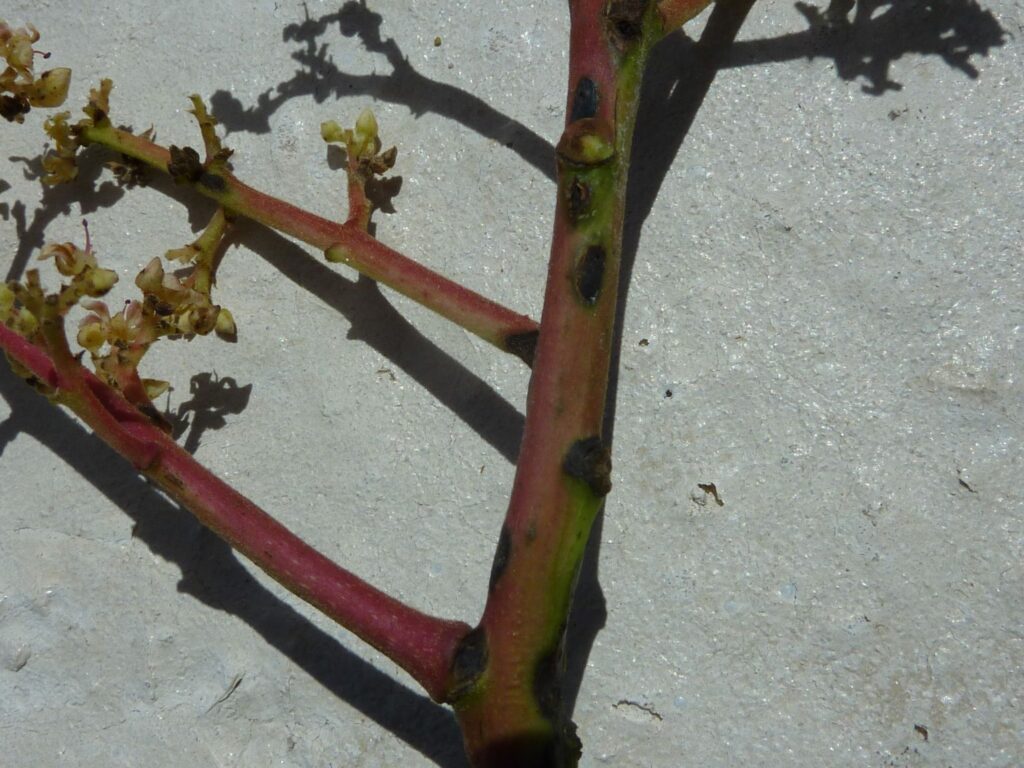
How to prevent anthracnose?
Anthracnose is difficult to treat. It can affect plants growing inside greenhouses as well as outdoors. Prevention is the best cure.
There are lots of ways of preventing the spread of anthracnose. For example, anthracnose fungi live in plant debris. So, one of the best ways to stop its spread is to tidy up dead plant matter.
Air and sunlight help to prevent the spread of anthracnose. By spacing your plants far enough apart, you can have better air circulation. This can also help more sunlight reach the plants.
Pruning is also important. It helps to clear away the dead leaves and twigs that anthracnose likes to live in.
Also, pay attention to environmental factors. A wet spring might mean you need to take extra preventative measures.
Some plants are resistant to anthracnose. You can help to prevent the disease by choosing plants that are resistant to it.
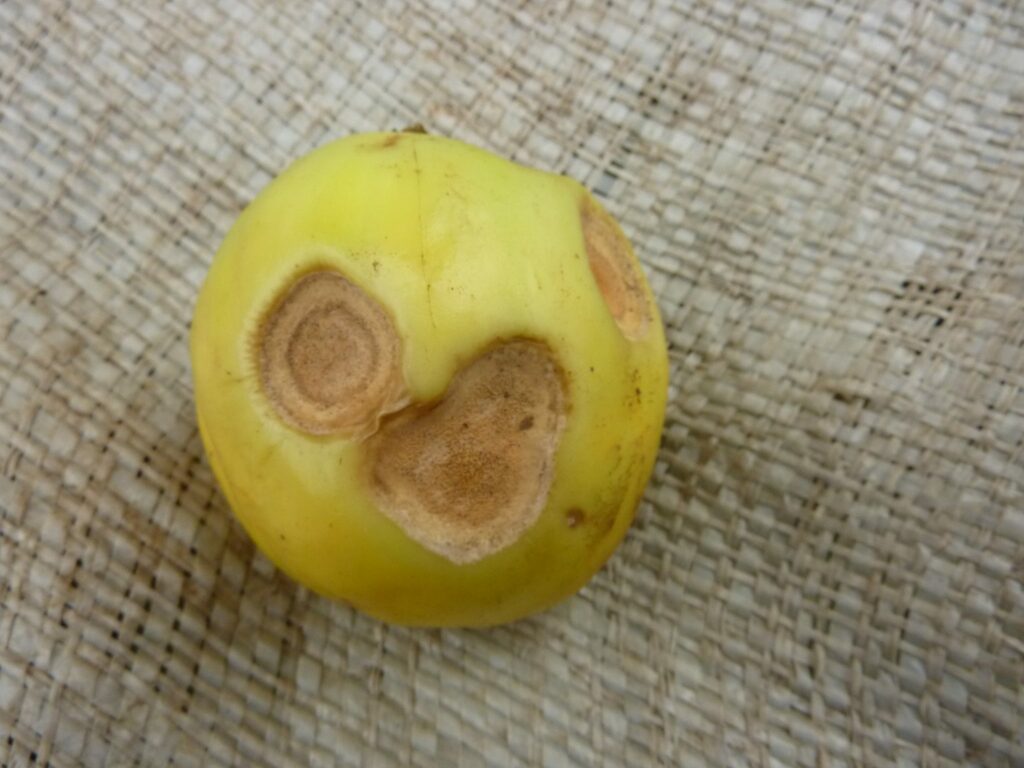
How to treat anthracnose?
There are various ways of treating anthracnose and certain biopesticides can help stop anthracnose infections. Products based on natural substances and various microorganisms can inhibit, destroy and out-compete the infectious fungi.
For a list of biopesticide products that can be used for anthracnose, see the CABI BioProtection Portal.
Environmental conditions also affect the spread of anthracnose. Managing these conditions can help treat the spread. Remember that anthracnose cannot be managed if it has spread if it has become well established.
Want more information about managing anthracnose? See the Plantwise Knowledge Bank for information on identification and management: Plantwise Knowledge Bank
Related News & Blogs
How do pest risk registers address the spread of plant pests in Africa?
Pest risk registers can help to solve problems in agriculture, addressing the growing global threat of plant pests. Moreover, changing weather patterns, led by rising temperatures, are causing them to reproduce faster and expand into new regions. In ad…
10 July 2025

